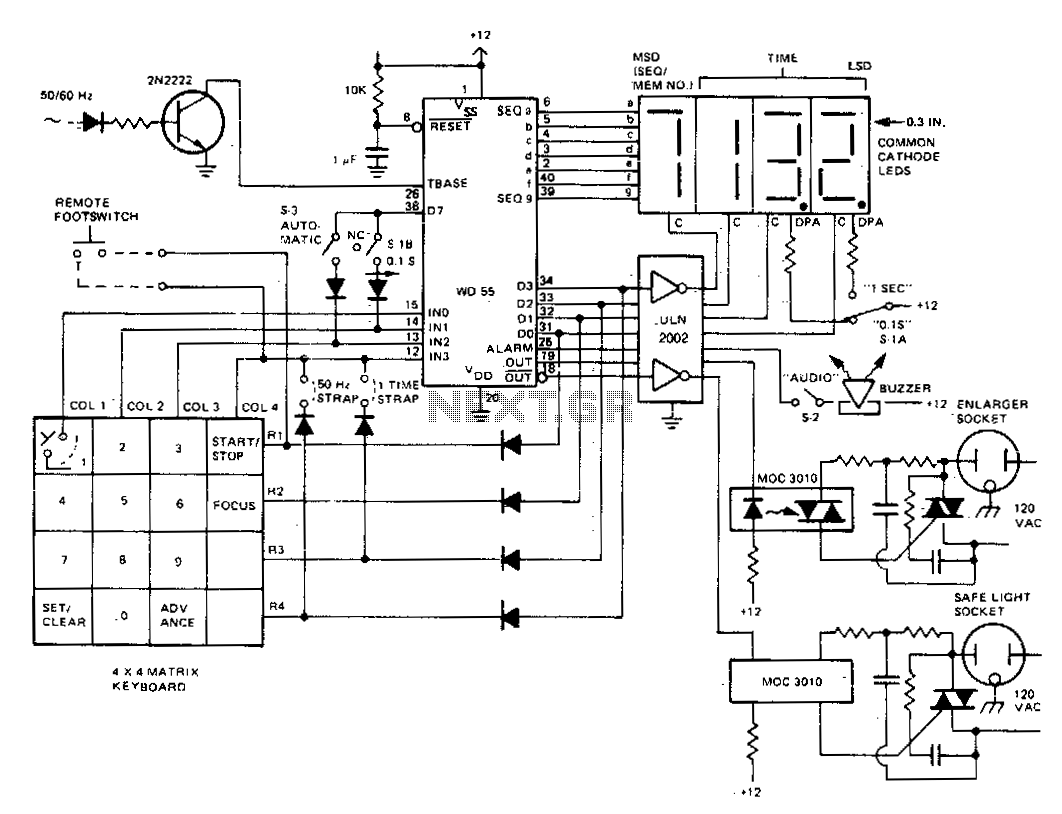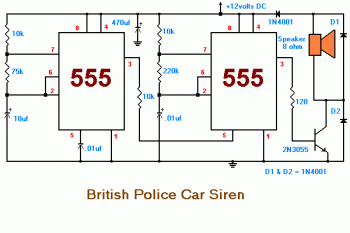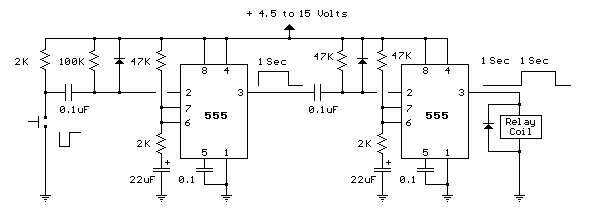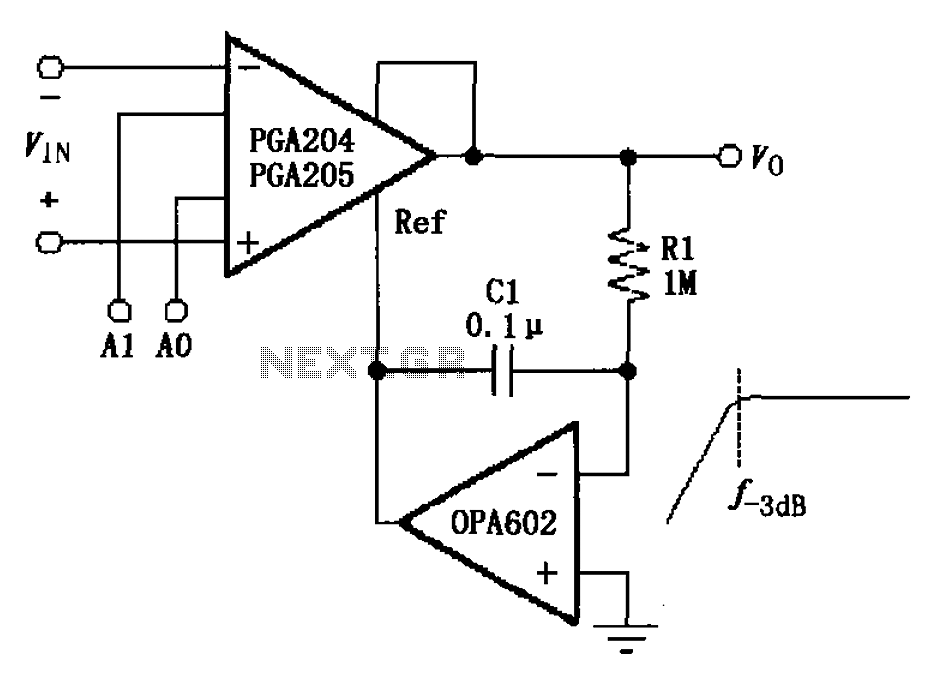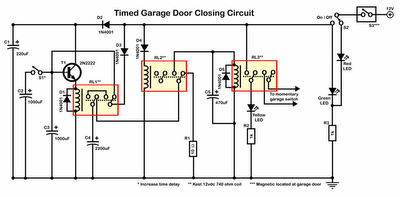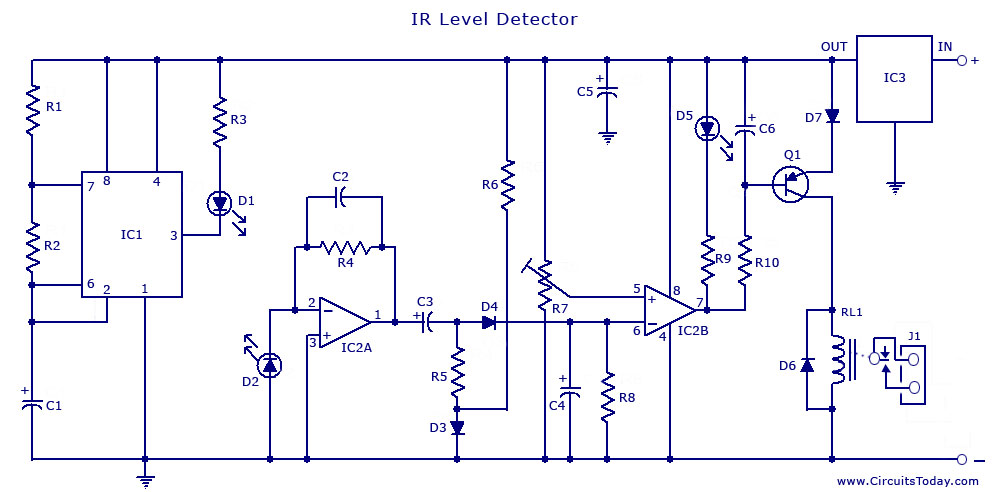
Long-Interval Programmable Timer
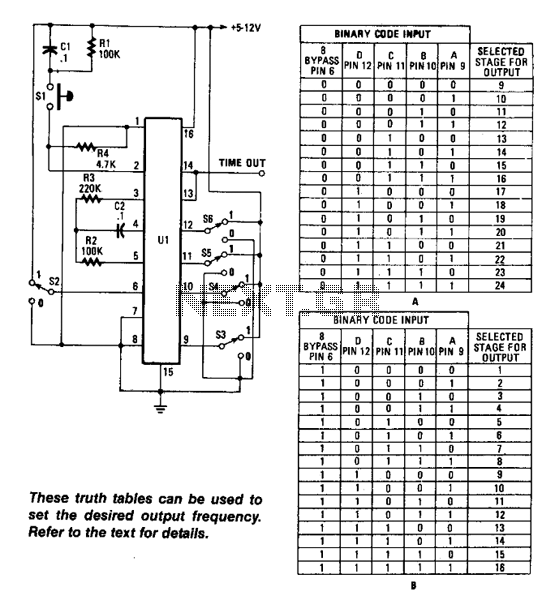
Using an RC oscillator, an up to 24-stage ripple counter (O) 16777216 or 2^24, and a 0.1-Hz count rate, with R2 = 39 kΩ, C2 = 0.001 µF, and R4 = 220 kΩ, the count cycle would take approximately 654 seconds. This example demonstrates the capabilities of this timing circuit, utilizing the Motorola MC14536 timer. A low-frequency oscillator can be employed for extended time periods.
The described circuit employs a resistor-capacitor (RC) oscillator to generate a low-frequency signal suitable for timing applications. The RC oscillator's frequency is determined by the values of the resistors and capacitors in the circuit. In this case, R2 and R4 are configured to establish the timing interval, while C2 provides the necessary capacitance for oscillation. The oscillator output feeds into a 24-stage ripple counter, which is capable of counting up to 16,777,216 (2^24) clock pulses.
The ripple counter operates by incrementing its count with each clock pulse received from the oscillator. At a count rate of 0.1 Hz, the counter will take approximately 654 seconds to complete a full cycle, demonstrating its utility in applications requiring long-duration timing. The MC14536 timer, a versatile integrated circuit, is utilized to manage the timing functions effectively.
For applications requiring even longer time intervals, adjustments to the RC oscillator can be made, such as increasing the resistance or capacitance values, or employing additional stages in the counter. This flexibility allows for the design of timing circuits that can cater to various operational needs, making it a valuable component in digital timing applications across multiple fields. Using an RC oscillator, an up to 24-stage ripple counter O) 16777216 or 2U, and a 0.1-Hz count-rate with # 2 = 39 KOhm, C2 = 0.001 ¥, and R4=220 KOhmhm for example, the count cycle would take about 654 s. This example shows the capabilities of this time circuit, using the Motorola MC14536 timer. A low-frequency oscillator can be used for longer time periods.
The described circuit employs a resistor-capacitor (RC) oscillator to generate a low-frequency signal suitable for timing applications. The RC oscillator's frequency is determined by the values of the resistors and capacitors in the circuit. In this case, R2 and R4 are configured to establish the timing interval, while C2 provides the necessary capacitance for oscillation. The oscillator output feeds into a 24-stage ripple counter, which is capable of counting up to 16,777,216 (2^24) clock pulses.
The ripple counter operates by incrementing its count with each clock pulse received from the oscillator. At a count rate of 0.1 Hz, the counter will take approximately 654 seconds to complete a full cycle, demonstrating its utility in applications requiring long-duration timing. The MC14536 timer, a versatile integrated circuit, is utilized to manage the timing functions effectively.
For applications requiring even longer time intervals, adjustments to the RC oscillator can be made, such as increasing the resistance or capacitance values, or employing additional stages in the counter. This flexibility allows for the design of timing circuits that can cater to various operational needs, making it a valuable component in digital timing applications across multiple fields. Using an RC oscillator, an up to 24-stage ripple counter O) 16777216 or 2U, and a 0.1-Hz count-rate with # 2 = 39 KOhm, C2 = 0.001 ¥, and R4=220 KOhmhm for example, the count cycle would take about 654 s. This example shows the capabilities of this time circuit, using the Motorola MC14536 timer. A low-frequency oscillator can be used for longer time periods.
